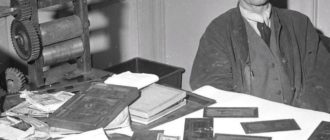
Marquetry is a kind of inlay, a surface finishing technique by gluing decorative veneer elements (thin plywood) onto a wooden base.It is widely used to decorate pieces of furniture and decor in the form of beautiful patterns, ornaments or designs.
Marquetry is an ancient craft in which the craftsman creates unique pieces of art using cutting tools and glue. This inlay technique requires a great deal of patience and perseverance from the artist, as well as the obligatory presence of talent and hard work.

Types and features of marquetry technique
Marquetry is sometimes called the art of wooden mosaic, but in this technique, in addition to wood, other materials can be used to decorate small areas of the surface:
- ivory;
- walrus tusk;
- tortoise shells;
- nacre; tin and brass inserts;
- straw.

The simplest type of marquetry includes surface finishing with decorative elements made of plywood in two different shades.
For the manufacture of veneer, wood of valuable varieties is usually used:
- sycamore;
- boxwood;
- black and mahogany.

Artworks made using the marquetry technique can be classified according to many parameters:
- Type of veneer (natural or modified, wood (trunk) or root, sliced or peeled, tangential or radial).
- Pressing type (hot, cold, vacuum),
- The type of additional processing (arson, sand shading, engraving of fine lines, tinting of individual parts). Thickness of veneer (0.5-2 mm).
- The type of protective coating (conventional or special varnishes, polyurethane oils, wax).
At the initial stage of marquetry, the artist usually makes a sketch (project) of the future work of art and selects the necessary tools. Nowadays, master marketers use sets of knives with removable blades in their work.

History
The history of marquetry dates back to ancient times. Already in ancient Rome, there were masters of artistic decoration of furniture with thin strips of valuable wood. The oldest inlaid objects discovered by modern archaeologists are at least 2, 000 years old.
After the collapse of the Roman Empire, the ancient art of marquetry was lost for many centuries. The centers of its Renaissance in the 16th century were the European cities of Florence and Naples. But Italian craftsmen preferred to work more with natural marble and precious stones.

A full-fledged revival of the art of wooden mosaic took place in another part of Europe – in Flanders (in the territory of modern Netherlands and Belgium). At the beginning of the 16th century, Antwerp was the largest seaport in the Old World, where valuable timber was brought from America, Africa and Asia.
Flemish craftsmen quickly learned how to make unique household items and furniture, musical instruments and wall panels, panels and columns from veneer. From the typesetting tree, artists created not only patterns and ornaments, but also whole paintings with subjects on religious, historical, mythological and everyday themes.
In the second half of the 16th – early 17th century, the greatest master furniture maker of the Baroque era, André-Charles Boulle, lived and worked in France. Contemporaries called this genius of wood inlay “the furniture jeweler” for the sophistication of style and impeccable technique. And the King of France, Louis XIV, not only was Boulle”s regular customer, but also contributed to the emergence of fashion for the artist”s work in the high society of Western Europe.
The heyday of the art of marquetry came in the 17th century. Objects inlaid with veneer were very popular among the richest people in France, Germany and England. Inseparably linked to the 17th century are the names of most of the greatest marketers of all time, with the exception of André-Charles Boulle.

The most famous marketers
The names of the most famous marketers were well known to their contemporaries. The fates of these artists developed in different ways, but each of them made a huge contribution to the development of the ancient decoration technique and deserves a separate mention:
- André-Charles Boulle is the most famous wood inlay master of all time. The magnificent and elegant style of marquetry is named after him, and the artist”s work was continued by his four sons and numerous students. The king of France allocated the genius a room for a workshop in the Louvre and provided patronage until his death.
- Jean-François Oeben is a German-born French marketer, a student of Charles-Joseph Boulle and the grandfather of the famous painter Eugène Delacroix. Eben has gained immense popularity with customers due to his unique talent for creating ingenious mechanisms in the manufacture of exquisite furniture. Jean-Henri
- Riesener (Jean-Henri Riesener) – also German by birth, who lived most of his life in France. Rieseneur was the court furniture maker of King Louis XVI until the French Revolution, he worked in the styles of Rococo and Neoclassicism.
- David Roentgen is a German artist whose works were bought with pleasure by the monarchs of Germany, Russia and France. Röntgen was an unsurpassed master of exquisite Rococo design and worked with the most expensive types of wood.
On the Very Important Lot website, everyone has the opportunity to take part in art auctions and purchase antiques. The site also sells exquisite furniture directly from contemporary artists.











